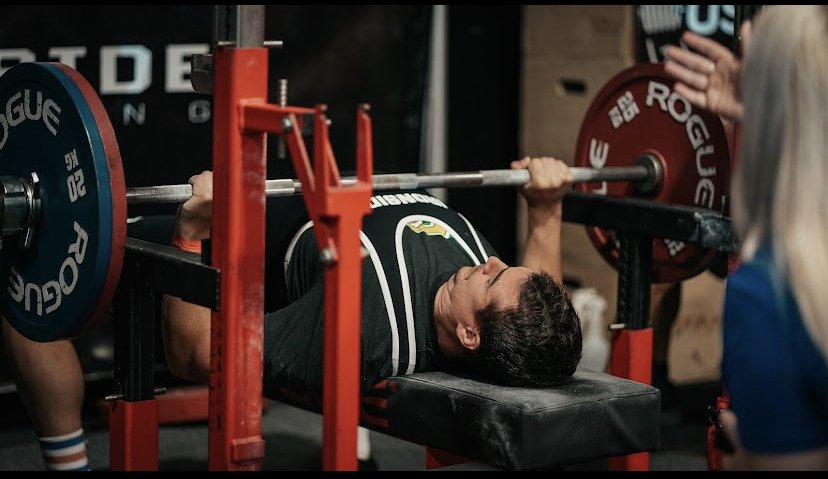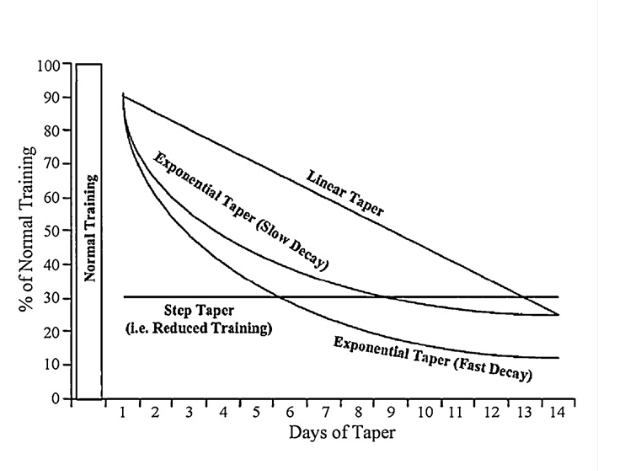
Peaking for the Platform: A Guide to Tapering for Your Powerlifting Meet
You’ve spent months building your strength, honing your technique, and pushing your limits. Now, as your powerlifting competition approaches, the final piece of the puzzle is the taper. A well-executed taper is a crucial and often misunderstood process that allows you to shed accumulated fatigue while retaining—and even enhancing—your strength. This guide will break down the science and strategy behind tapering, helping you arrive on meet day fully recovered and primed for peak performance.

What is a Taper and Why is It Essential?
A taper is a planned, progressive reduction in training load in the final weeks leading up to a competition. The primary goal is to dissipate the systemic fatigue built up during hard training, allowing your body to supercompensate. Think of it like this: your strength is your "fitness," but your performance on any given day is your fitness minus your fatigue. The taper aims to minimize fatigue without losing fitness.
A successful taper leads to:
-
Maximized Strength & Power: Allowing you to fully express the strength you've built.
-
Full Recovery: Repairing muscle tissue and replenishing glycogen stores.
-
Psychological Freshness: Reducing mental burnout and increasing motivation to compete.
The Key Variables: Volume, Intensity, and Frequency
Tapering is a delicate balance of three variables. According to extensive research and coaching practice, the most effective tapers generally follow this model:
-
Volume (The Most Important Variable to Reduce): Volume (sets x reps x weight) has the largest impact on fatigue. The core of any taper is a significant reduction in training volume, often by 40-60% or more. This is the main driver of fatigue dissipation.
-
Intensity (Should Remain High): Intensity (% of 1RM) is crucial for maintaining strength adaptations. You must continue to lift heavy, but for far fewer repetitions. This reminds your nervous system how to handle maximal loads. Dropping intensity too much is a common mistake that can leave you feeling sluggish and weak.
-
Frequency (Can Be Maintained or Slightly Reduced): The number of training sessions per week can often be maintained until the final week. This helps maintain the "skill" of the lifts. Some lifters may reduce frequency slightly in the final week.
The golden rule, as supported by scientific reviews like those found on Stronger by Science, is: drop volume, maintain intensity.
Structuring Your Taper: A 2-Week Example
The ideal taper length varies, but for most powerlifters, a 1-3 week taper is common. Here is a sample 2-week taper structure:
Week 1 (2 Weeks Out from Meet)
-
Goal: Significantly reduce volume while practicing with heavy, near-maximal weights.
-
Squat: Work up to your planned opener or a heavy single @ RPE 8-9. Follow with 1-2 back-off sets of 2-3 reps at a reduced weight.
-
Bench Press: Work up to your planned opener or a heavy single @ RPE 8-9. Follow with 1-2 light back-off sets. This is often the last heavy bench day.
-
Deadlift: This is typically your last heavy deadlift session. Work up to your planned opener for a single @ RPE 8-8.5. Do not grind this lift. Then, stop. The deadlift creates the most systemic fatigue.
-
Accessory Work: Drastically reduce or eliminate accessory exercises. Focus only on the main lifts and maybe 1-2 light movements for key areas (e.g., face pulls).
Week 2 (Meet Week)
-
Goal: Active recovery, technical practice, and complete fatigue dissipation.
-
Monday:
-
Squat: Work up to a few light singles with just the bar, focusing on speed and technique. Then move to 50-60% of your 1RM for 2-3 fast singles.
-
Bench Press: Similar to the squat. Work up to 50-60% of your 1RM for 2-3 very fast singles, practicing your commands.
-
-
Wednesday:
-
Last Light Session: Some lifters like a very light session with just the bar or a very light weight for a few reps of each lift to stay loose. Others prefer to take the rest of the week off completely. This is highly individual.
-
-
Friday/Saturday (Day Before/of Meet): Complete rest.
Nutrition, Sleep, and Mindset During the Taper
-
Nutrition: Do not start a diet during a taper. Continue to eat at or slightly above maintenance calories to facilitate recovery and replenish glycogen. Ensure your meet day nutrition strategy is planned out.
-
Sleep: This is your most powerful recovery tool. Prioritize 8+ hours of quality sleep per night.
-
The Taper "Funk": It is very common to feel sluggish, weak, or even achy during a taper. This is normal. Your body is used to a high level of training stress. Trust the process; the "pop" and strength will return on meet day. Lean on your mental preparation skills to stay confident.
Tapering is an art and a science. It transforms the hard work from your training block into peak performance on the platform. By intelligently reducing volume while maintaining intensity, you give your body the chance to fully recover and unleash its true potential. Trust your plan, listen to your body, and get ready to dominate on meet day.
What's your tapering strategy? Share your tips or questions in the comments below!








